Wolfram Function Repository
Instant-use add-on functions for the Wolfram Language
Function Repository Resource:
Convert an image to ASCII art
ResourceFunction["ImageASCII"][img] converts img to an ASCII art representation and returns a string. | |
ResourceFunction["ImageASCII"][img,prop] converts img to an ASCII art representation and returns the result as the specified prop. |
| "Grid" | a Grid of characters |
| "Image" | an Image object,including rasterized characters |
| "Text" | a single string (default) |
| FontSize | 12 | font size to use when rasterizing ASCII characters |
| "ProcessingFunction" | Automatic | preprocessing applied to the image |
| RasterSize | Automatic | resize img before processing |
Convert an image into a string:
| In[1]:= |
![(* Evaluate this cell to get the example input *) CloudGet["https://www.wolframcloud.com/obj/37a87359-b737-447a-b167-172cec11b9af"]](https://www.wolframcloud.com/obj/resourcesystem/images/0e8/0e8474fa-6000-491f-8398-9adb712b34c9/67c4aed7756921e4.png)
|
| Out[1]= |

|
Check the output type:
| In[2]:= |
|
| Out[2]= |
|
Convert an image into a structured Grid of copyable characters:
| In[3]:= |
![(* Evaluate this cell to get the example input *) CloudGet["https://www.wolframcloud.com/obj/59a032e1-d814-4e26-baa7-fd572b5265cc"]](https://www.wolframcloud.com/obj/resourcesystem/images/0e8/0e8474fa-6000-491f-8398-9adb712b34c9/75d816ce007ea736.png)
|
| Out[3]= |
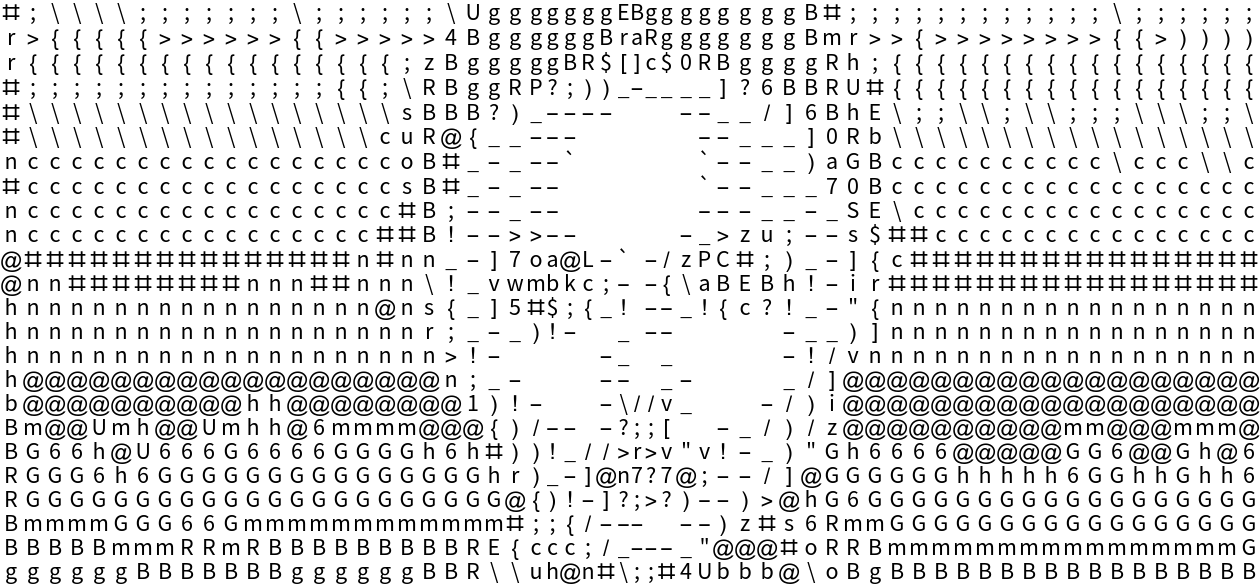
|
Check the output type:
| In[4]:= |
|
| Out[4]= |
|
The output contains formatted characters:
| In[5]:= |
|
| Out[19]= |
|
Convert an image into an ASCII art raster:
| In[20]:= |
![(* Evaluate this cell to get the example input *) CloudGet["https://www.wolframcloud.com/obj/06dfd100-2650-4c8d-a262-61008cfe8731"]](https://www.wolframcloud.com/obj/resourcesystem/images/0e8/0e8474fa-6000-491f-8398-9adb712b34c9/5f975ea570ef2666.png)
|
| Out[20]= |
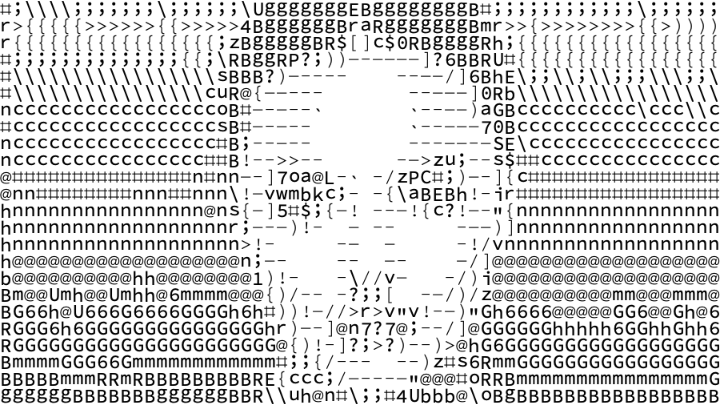
|
Specifying a custom font size for the character rasterization may result in a better recovered output:
| In[21]:= |
![(* Evaluate this cell to get the example input *) CloudGet["https://www.wolframcloud.com/obj/ccad9c72-460f-4927-8553-78b77bef2ae6"]](https://www.wolframcloud.com/obj/resourcesystem/images/0e8/0e8474fa-6000-491f-8398-9adb712b34c9/4481d08ab2d2c31a.png)
|
| Out[21]= |
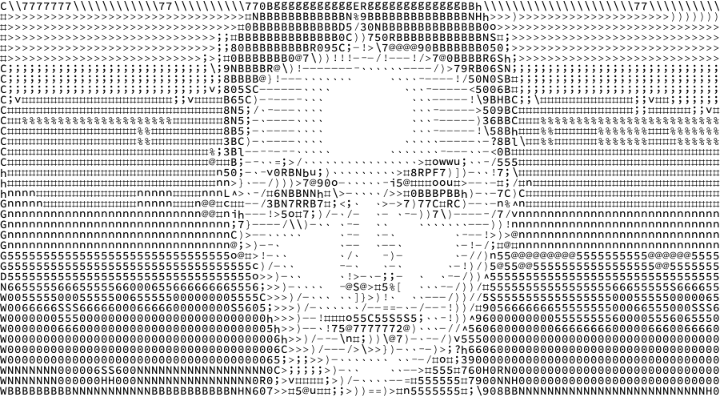
|
On the other hand, a larger font size might improve the time complexity:
| In[22]:= |
![(* Evaluate this cell to get the example input *) CloudGet["https://www.wolframcloud.com/obj/00d378b0-3bbe-4482-9fca-9cd89173f189"]](https://www.wolframcloud.com/obj/resourcesystem/images/0e8/0e8474fa-6000-491f-8398-9adb712b34c9/4941c63e790befcf.png)
|
| Out[22]= |
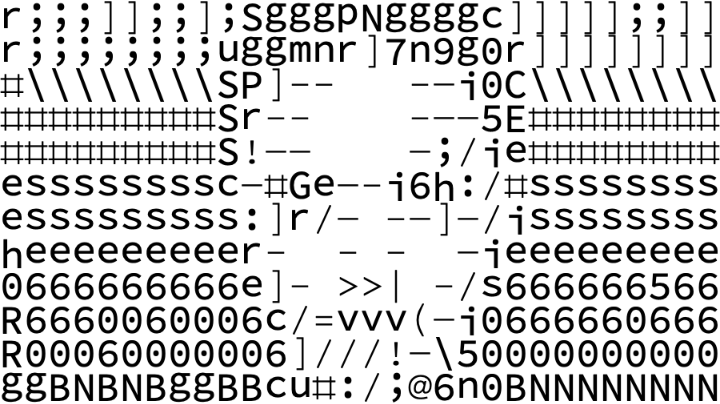
|
By default, a combination of image processing operations is performed to preprocess the input image:
| In[23]:= |
![(* Evaluate this cell to get the example input *) CloudGet["https://www.wolframcloud.com/obj/5f86c636-6979-4488-b65b-f2d8adfb5b49"]](https://www.wolframcloud.com/obj/resourcesystem/images/0e8/0e8474fa-6000-491f-8398-9adb712b34c9/5c885fc866ec6b81.png)
|
| Out[23]= |
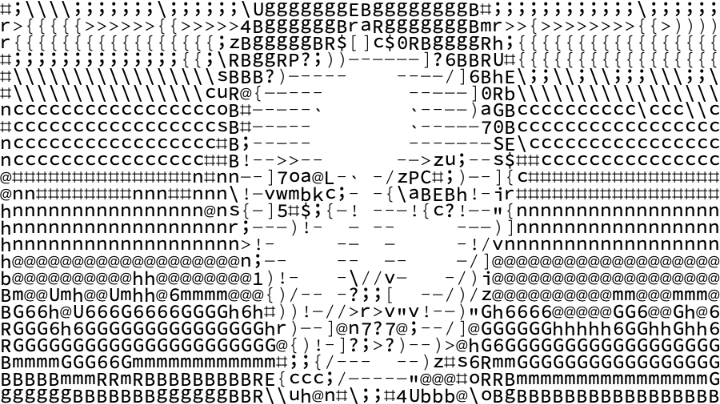
|
Using a custom preprocessing function affects the output quality:
| In[24]:= |
![(* Evaluate this cell to get the example input *) CloudGet["https://www.wolframcloud.com/obj/3da2b4a5-d507-4801-b462-a3724d214529"]](https://www.wolframcloud.com/obj/resourcesystem/images/0e8/0e8474fa-6000-491f-8398-9adb712b34c9/4461fa99deeab8bf.png)
|
| Out[24]= |
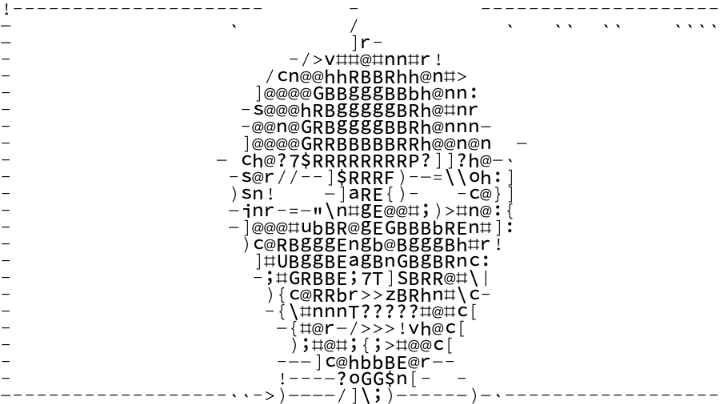
|
By default, the input image dimensions are preserved:
| In[25]:= |
![(* Evaluate this cell to get the example input *) CloudGet["https://www.wolframcloud.com/obj/195f4ecc-406c-4860-895a-3b6642e76f90"]](https://www.wolframcloud.com/obj/resourcesystem/images/0e8/0e8474fa-6000-491f-8398-9adb712b34c9/6034ce0f1ae5390d.png)
|
| Out[25]= |

|
| In[26]:= |
|
| Out[26]= |
|
Resize the image:
| In[27]:= |
![(* Evaluate this cell to get the example input *) CloudGet["https://www.wolframcloud.com/obj/2facebf5-84cc-4f75-9a7d-7a4da3e98c68"]](https://www.wolframcloud.com/obj/resourcesystem/images/0e8/0e8474fa-6000-491f-8398-9adb712b34c9/3ef34a95360e69bc.png)
|
| Out[27]= |
|
| In[28]:= |
|
| Out[28]= |
|
Grab an image:
| In[29]:= |
![i = \!\(\*
GraphicsBox[
TagBox[RasterBox[CompressedData["
1:eJzt3fl/VGX2J/CemV/mx/kX5r+YX+fH+XH6Oza1b0kqgMgSoMV2ARdwB1Tw
+1VR0a+KbIoiKC5giyKgjaCACu0CgYDaSkjIWkvm3PskRUHq3vss51lu1Uk/
zQtDKKoqt9518jnnPvd/lhb9ufxf//SnPy397/DLn4u3/+++vuId//Y/4D9u
Wbh0Xu/Cnu7/s3BZT29P3/8q/Tf45CT8/9p/+dOfvN9fuHjB4rp0aSBwXb4U
tH755XLQ+vVXWL8Erd9++zVo/etfv4Us9gW///6vkPXHH78HrStX/ohcVwev
hK+hq4ORi33Z8NBViXVteEhxjVwbtr5GR65JL+t3Hpb6d0Huuz88FH10eSvq
KOU51P2PwBdL+Kus8WIMf7W2XCEywAI9QmwJ5ihYsEsDdnW1uAZCYHfMdjik
QlX/15UrgceqSduHLKl+7Zq3XHYba2m33X8mFd9hJYRnf0XddliDUcKH2+5/
QbTwErZHCu9/YNo+0Jm8DwQX7cGqX74cqLoPe9j7sg7YQfWQo5QTdhTVRV/L
7G+R51jO65Bf3XmVYyPyJ8Qw3pWr93De/Q9NvAfycllK+IsDF+1ja3ZNG062
W7LdzQTGOtcOVvXmUxp129Wrd0XeXbH98qXOKt0v9MN7GW7RLh3FRMEe9oNh
eMaurrrGEGbIuVrdOsuuC69Qw0scIZ7wPAm8WvyuyHt4OCPHe0gsE5rMUOnu
L3isUjG7cdsjYLdvu2HYsWt16wjHznmT1TsX72Q7h+2dU7p7RTtqGmOpf6qk
+qCNit2dBMY6uSQ897JfvWvqq8o1VeWSmQ4p3QcMBjIKaYxG28Nh11ixW81h
rAPryEKw3Wg+Q7YjdFQ7oXSXgF26f6pNdaVR9vDpAh2wS4YweLm6dU4dXGg1
vBHk1bP3yMkZJ4WX6qsG8d7WpXtYGkO266nYVdqm5HkshL8mm9IYzt5DJmcG
Bxnv7Wx7eyczcuMxobDLpDGaYHcwY5eBPYYJzFjQGh2JXgF/N4bCO8C78ty7
2tA7Mu+yfdXgQZH2TWZCHnIsbI+s2EMOXfMZu1zFHkvPeQwXXbFyfpTx7kD1
Hn6Qa63eyXZbKw5Ju6TqkUV75AGPC7tcue5mra7dcMfMd7+A1529O1W6o/dV
2y91j0nS7qrtuit2Bdi1V+bWMY9y3rUafkQqgXcne29v2y+10alMF2Vj9pA0
Rm6gXS1mj0nFbqRcb5anbetzB+p58wW8iPB6s3fFvSIlhMfmPSKZ6Yf/2cZZ
cfWT7SYrdvF0ffSasCFaqnTrOLtdzwt/jxjvDtuuUr2T7S6s/pCkPVh19DOV
9PVPpWG3W7ErFIRUpVtwXqmAtyh8FO9RYzP44YwLyUx7pO4DBncYaCvb9Vfs
tmBvtyqdY9mq3sl2N22HP4o77xr2e3Slfxp+TIbDjlixm2qb4tXqtpm1udBq
eBnkdcbvSsJH8e6K8DqSmQsX45rMkO1u2W4JdlIdX3hJ3sVqeLKdbA9azift
WmAPO00JSXVjE+yqqluHdHRkfGy05bJ+x8bUshpj1Ts38vLCW5mZMcV7G6bu
Jvfydcf2yI0Fhq3YLjvBHotafWJsLGRNjo+3XOF/yxDvijW8kerdgO1WZmas
234ptjvMBAYy4qrHJY0JO3Qj93jkU519sWbVna7Vw03Wt8ZHR2Hpe1xqNbz2
Ap4zn4k4rUmhtepIMvNr8B5iCslMzJbbtoe91+uwHWswRrTiGhGeYFdQXUOt
bkvyoPpfY22vnMML/DjGeNeSvYfyTrbH33brSXv40KPhicf4dE7FPdFWq1vH
nHNpquFlvhfiEY2d7qo875LCh2tAqbtYxW47aSfbjVXsiLW6daidcV62ehfk
nWy3bnu8UnfcLR/NJu2mYef/UVdfxW43gWE5tnWWERdaMq+Q0ugTXiCcMc57
LJMZsp1sd812pCqdZ2olXqv5Eak/S2R7m9sen1hG4nwlg2mM0f4pWhSjS3Vr
tbp1fg0vhBp+VKaGF0rg9QivKZyJbTITYOPFizHgfSC4I0y2u2S7bA6jdtaP
dWbjKjw87XL5DDfvZLtF26F0d3xnSCjaA203ksagw263f8r/WhP6GVymYo9J
rc6ybv4MX/TrLQuvv3ofwRZeZeIdPZzxP9B4x01mrOsdXbQLTsiQ7cZtl6rY
nVedraCzUHmWyfvpbPWObnsE7wZtZ5931HafTeuABxbtIVe7jmcaE3JoDfp6
y8DOqTr/uKO2jF19dh3Xw9nVtYrkLmiv8txqrd415DNhpY77fVUzyYx1wwOL
9rbrorad7eLluqztblbmbmovybvEhKTN7J1s50jd3eRdajtfM7C70z+NS8Wu
Mg/Tfp47LbxgAm+3ekcP3nWczYSYzATTR7aT7REZO3clJl6ui8/DtLfnZpwX
tl0igbdXvZPtkR1VB89jQtwZzGAa49zQIy/sjlXsnea5buflanht1Tsi7/gz
M7FNZsh2st1oxi5asTulOrup6VP+R0ZgNY84sn0AbvjM2KiO9xRbwuuo3kV3
jCTb28n2/ov9gRMylMbomHjUA7tcrSinVvPEi6KizdPp1cnJeq06Va9P8X7U
p2o1+FtwUzdNueO+0Zis3oX2GUMPZ7iSGS19VcvJTAjvwqm7S7yLnq9Etsvb
rq9iN5jDqLPJ7gCw3JC8WqnATz1wPJ4+ferIkcMfffTh7nd2b9+x/bXXXn3p
pc0vbn7x5Zdf3rLltR07duzZ887+/fuPHDly6vSp/v7z8L2D22zyvg4328yy
3Uq+/WwP551sd8d20R19XU5jQg6eENjN9U81wC6RrjenGaK1umqVPjIyMT42
7Xm9fvXKH6dOndr33nubNm164IH7+5b2lXvL+UI+nUknU8lEKun9Cv+b+U0i
lZj+fDoJXwNf2VPuWbx40T333P3EE+u3bX394MFPzp49OzQ4WK/VmPSViQmU
e244n+EXnj97R67epcKZ9kpmAktiR5IZst092wUDdkE35LBSsZHVz1O+t5XJ
yR9++GHPnj2Pr3180ZLFuUKe0Z3JZgrFQqmr1N3TDWLDKvurJ3jBV3Z1leBv
ZXPZVBpuJQG/lrqKS/qWPProo2+++cbJkyevDQ9PIz8+4b2zKDwQN23nz97J
9o6y3cyuj0FPcqjthtIYxf6p0MQjV/NLm+oStbq67eythFXp58+f27XrzVWr
VgHIUIRD4Q0sNySfthq0FlndsHq6m28EPgk3CzcORT4U9sv/uuz5F57/6quv
RkdHvHtRqyoGNc0/xQj/7CM4mCoUyvFW77b7qqHJjNwmM2K2B/GOvDOkbd7J
9g6xXQV26Vq9MjEBnALwR48cgSq9p9wNpEONDfxKY84Fvk99uVyG3wDvgHw2
l7njb3fsfGMnvOC8N5paHSWKl3gyhXgn28l2yYV8vlLgqQF205i49E8drNhV
xANB4Z/ev/+ju+6+C6poWKAu81aH5+HOw6+5fA7eWXrnlp999pmzZ8+i1PAG
eBcSnjt4R+yrmuMdMZkJwQqrowrrgkXeyfYOsF0OdmnoQEuvLq5WPz148I6/
rUimEoBqIy2xuID3cm+51FVKpVPFruLGpzf884d/ene1UhkbGXGZd1zb+Sfe
yfb42h6vLqrRNMZ4/1QAdm0Vu+I8SSOE+fbbb9c8uAYIzeay5V5Q3WihHrlA
ePgV7l5XV+mFF1+AFz/cZ/bwFYUXSuDtVu+ofVV03oXnISU6qnjJjIsdVbJd
u+3cQ486bBet2FVkg9IXhBwZGXn11VcLhXwmmzEfvwgtL6jp7kqmkgtuW7Dv
/X3wg8ZUrWZ4VNJi9U62t7HtiF1U6+crGU5jbPVPdUcxKqAB7Ge+/+5vd96R
SCZYxG1db07hi6UiCL96zeqffvzR6/yOGU3gNVXv3ME7lvD2kxkDw5Bx6aiS
7W1su3DFPibvGMth9r67F5D0Q5iydbGFFsvhM9l0d0/Xnr17vBZrpeIs72Q7
2R6xkEcftZ+vJHcBDvfTmBhX7BMg2Kg3ajI+9uxzz0Lpy8pg61ZLF/DwayKV
WLd+3R9X/vATeK994KTwFsIZp5IZI7yLDkM601El29vUdjMZOzuRH0pceHGu
XrM6kUxA6etyus5dwPekUsmly5aePXuGNVjhkUoLT7aT7eZtD+yiysAudr6S
GdgtpzEcsAuorgd2adVhTfiDjr/8+ssdd6xIpVOxy2FCFjyWXD4Hv/n0s08Z
741HLV3Ac35fBLN3B/uqwa+s4D3EJGIZCd47p6NKtsfJdu6XvFbbmW8e7F7n
tA5HD9S36Uy6nWBnq6fcU+oqpbOZt3e/7fHuPfbrD59sJ9udtd1iF1UC9t9R
z1cKOfY4furkOlMJq3+qL2OXVt2LYnzY4bjvW9rnDTq2HexssT1qEsnEli2v
Ae+TE15/4TrvUsLrCGc4r8fHJTxOMhO8hxhqMhNkhUQy004dVbK9zWznh11u
Hqa5ZK3VavBSXLFiRSbbhhX7TbxDAT8nMeeVV/9zunof956Eqv4Enpd37mut
ku0dYvsA0uXzUEcfXW+hGu6fupCxN5frTLPqZGV0dPS+++9rs4w9ZMHDnJNM
vPrqKz7vY7OfExeqd8f6qphNVYlkxsGOqrGrdZDtHWi7aMV+E2JQsnq2V6tP
PLk+mUp0COxsQfWeSCZ27tzRPDmjIjzZTra7EMiY2dE3OI1pbXtMYeftnzpW
sc/0T6de2/LqnGRnwc5Wd093Kp384IMPvBNX/W1zbuZdUHjs6t013jGTGYvn
MaF1VI3EMmR7p9muWrF7sHsTjwcO7E+lkvE9O0nRdvg1l88dP358dvUul8CT
7WQ77opRFxVx9NEF2BH7p5oq9tmqT1fs9amzZ890dZXYBe+sS2uL90KxMH/B
fPgJu1attny63K/eY5vMoA1D6u+oku1ku3bb1St2L2OfnBweHrp9xe1sG3br
xlpc5d5yOpu+7/57J/x5yJuesVhU72R7u9oeGMgEjfSIX4lDvIva2nYz5ytF
/mg5zDP3iJTGcMJuJmBvjtmfffbZTuufhvDuDb2/voXtGNnySdNUvZsMZ3Tz
HvJSxeqohvCO1VENZtMC72Q72S6WxkxNfXbos1S6Q2P2lqunpzubz33zzYnA
sRk91TvZTrYHLntd1BDYg7uoOKOPLqQxWP1TgXOUlCv2SX/iEZ7whYsWFgr5
jo3ZW9he7snlsivuWAHftcrkZNhzyI08bvAeA96d7KgyxrV2VHXtG0a2k+0c
qjcX7c9tei6ZSlIac9Niycz27duCSneynWw3aTvWFfQ6qItqBHbk/qlyxT4z
G1M/ffp0Pp+zVbGzU/5BUXYdbbbBC1vsM43P2xIe/unz58/VatUQ3tGFN9lX
5eHdbEdV+3lMSB1V05OQZDvZzmk7C2TWrFmdyWZMJu0Nt0tdpVw+l0qnoDyG
HxzSmXQ2n80X8rlCPpvLss/Dgs8XigX2VwzDDm86cDc2bNzg7SRGtpPtVm0X
nX6UCGRaPmNuwh6vNAY3Zo9IY/y92Y8ePZJOp8qmzGQVOOidSoPkqd7e8p13
3fnkU09u3759/0cfwZ058fWJU6dOnTx58vjx44cPf/7++/teeeWVRx59ZOGi
hSA8MAtvB4avD8Lu8HfffQs/44SX7kKzkTzf6HglM1i8u7n/QGBHlWwn252y
nf1ppXLf/feaKdoBZGAZcM5mM8v/uvyFF1449PkheBFUJienOD6uDg4eOXJ4
w4an5s6bm0wloIw3Jjw8OfA2tP6J9WB75Dsm2U62a7IddasBnOnHeHdRHUtj
UCr2Rgv12LF/ZHLaYfduH1T39zF4+umnjx07Njo60kC7Xq1WJyeD34O8X+EL
wFX29fBaevPNN5b09SWS08Ib4B3eRIql4j/PnuXhHVH4tk9mQl7s9iYhHT2J
iWyPqe24MTsPPvVa7fHHH0tn0lpt94vedHdP14ubN/f39zc8Z3cD0K5VKjyr
4T/8bbiFoaGh3bt337bwtmQ66TVey3oLeDYws2nTc41rZ5PtZLth2wecm360
F8h0JOyR7MzAXj/388+ay3XP21Q69fCjj/z44w9MdXYHWgNe9Vf4Zxjy4+NT
1RrcGhxgm57flMtnC4W87gIe6vb5t84HEuoBm8zItVax+qrGkhlJ3mU6qmKx
DBbvzk5Cku1kO2cgs33H9qS2/R4BdsCwWCrsfmc3U31yYry5Sq/XqjetqXoN
Vvhn2GLCww2yoObYV8cWL1mU1nx9KK90TyX2vf+evwtBREeVbCfbcW23ta+v
6PRjXLqobQl7ZdxLQkCnv935t5yesXaAHQrpuXN7j5/wdsplcUpLzxUXVPV+
SjMFr97Vqx9IpZPlXl35ErwJZrKZ1WseCNocUpp3HuH5whkM3jupoxqjSUiy
nWznKtrr9W+//TavZ4cBtkfu3Llzz54544UwkxPopN+04J+A8n58fPyJJ5/Q
fHatt/Xx+XM/1+s1xFiGbCfbowMZzRfR0x3IGO2iRh7DUYEMz0/BKLCjVezN
gcz27YlkAj2Q8d8sSmD7119/bQZ2tsB38LZSqaxbvzalbVyfdVTf2/du+BYE
FvuqTscy4h1VxP0HrLRTES+xR7aT7ZHLC72r1fvvvy+bzaLbDjeYSifffXev
Sdinea96vI+Ojtx1913ZHP5Dm3l0qbVrH4cffNgzSbaT7WZsFwpkQs9acmv6
0cEuqrE0BhF2ZhG4BN/8ufPmlrpK6PSlM+nHHnsU/gkopGs1/IA9snqH95Sf
f/6JZU3d2LazuGnx4kVXBwfrtRo8n7y84/VV1ZOZyLwR4zwm7R1V/ZOQCGcw
ee1Usp1sN2I7fPH0PgM6xtrhl56u8+fPMdsNw85WpeK1Vnfu3KEjcWK85/K5
kydPepM//sWqyHayXbftWgMZBr6VQCboYAix3YkuqkuwswqzYfvrW1/3eo5l
zJ5jubcHbvOFF1/wBmMswV73J2egoB66enVJ32KosdGbxT3lMjzM9957t2E7
Z/WO1VeNSzIT9NoUt90O707FMmQ72R5pO8tkHn7kYR17yACk/efPe2ed2rO9
zsZmpqa2btvqXR9QT0PhueeeJdvJdnO20/RjfAIZW7DXq9XRa9eWLV+aL2IO
QEI1m06n1j+xDsQDXMXK7Jml8jXNi6XuZ8+ehbodF3b2/pXJZh9Y/QDbNoHf
dv6+auSBwcF7dJffWkc1JpOQWGcwke1ku7Gi/Xx/v7dxejdmI5UNkHz22afe
eIxI0c7OPOVf3DdbHx8fv33F7egnZ7H9fpctXzY6MlL3z5wi28l2vbYjnbWE
dz0OR6cf2wZ2/v7p9bB9wgvbv/rqWDab6elBCyu86ZFS4dYFt8L3d2qqzlld
i6ouJDwr3detXwfvOLjREzzYUldp7ry58MpvTEIKVe8ofdU48N5pk5CBZzCp
7jxAtpPtkbb7jdQPPng/4TVS0cRjo4+PPPIwWKfPcyHnme0vvfySpg1zgPd/
/vMs2/qMbCfbtdoeeB09585ashnIGOiioow+4kYxjTUx7p2RuuX1LclkAvHE
fMAzkUy8+cYb/oRM6/OVdKgeIjxrp+7cuTOB+kgbpXsun/v66xM3tVNx+6rq
HdVI3qM7qlEvFmneYz0JKdZOvXxJcecBsp1sj7Sd1e0bNm7ATSpY3f7ll1+2
nH7UrXpL4Wds36HDdvZ4v/jyKNlOthuwXXQAMriRqvGsJQONVPe7qFbSmMaq
12prHlyTyaKduNTd3V3yd9Dq7z9/05CMSdVvEn4mk9mcSOJnMl7jOJM+9Pkh
aduxkhndvOubhNQdy2i1/RfBM5gU26lkO9kebXvFy2Vwt/b1GqmFfN/SvpGR
a1P++agWVb/Oe7UC8K5fvy6dQe6lds0MBR069BnZTrYbsB2lkSpqu+5GKv70
o23YzXRRW1bslQnvuhgjw8NL+pbkC2gnbHaXu7PZzKp7V9WAdAdUn17+Vfv8
dzFN+6GF2c6bzLRFRzX8FWdgElJrLCN8BlNQO5VsJ9s12j4xVav9/tu/5t86
v1gqYtnOwue1a9dO+eOP9lX3Mxm4M/Cy0HZJKc/2I0eOkO1ku27bAy/J4VIj
FSuQ0Tf9qNhFHdXfRZWO2adtn5o6f/68d+IS3g6Q0+fg+xeJrlUr1mGf8vZn
9AKZAx8f0DQACbeZzWW/Ov5VuO2RvJvpqOq2XbqdKhTLIJ7BpNd27Otik+1k
O6ftZ86cKXUVu7sRdxvwBiC3bHkNz/Z605Kv2594cj36iUtssZ1+v/vuO2++
fTzwCSfbyXZ124Uaqa7tNhAEu7Dtil1U/dOPttKY5gHIb05+ky9gnobPLkW0
a9ebkrZP1cUWR9Fer9cvX77UO7eXXQIP3Xb4qaenXL548cLsc5esJDNa26kj
xvf71d1ODeJdyPZg3lvbLt1OJdvJdk7b/3HsH5lsBtn2VOLdd9/1bZ8Urs+F
bY+o51kg89prr2q6cCor2hctXjQ8NDRVq5HtZLv7tru220C8ph8NdFFVApmG
7YcPH06hXpUDbiqZSnz00Ydcdbuo5IKVfM1PY86fP892fUGHvWsmbL/7nrtr
lUrdu45fGOxctptIZuzGMgGTkI61U4PHIBF2HiDbyXbdtn/66UH0k1JT6eSB
Ax9F2S5VpYtU8t5uwN5VU6sPeidn4e9O33i86XTqyaee5AlkyHayXcl2zbuE
Mcb5bQ96nnU3UrXaHusuarPtH3+8H3d6xK/bk3//+9+Dbdem+o2LnYu6fft2
75IcGtKYxuNNpKb7C/CcQ/Ve08+7AdtDMkmXrtMRV9svye0YRraT7dy2f/jh
BzpsP3jwk0Db9as+5Z+pxH4q8boJeir2xuOFf+LYsX+Q7WS7btsDByDjbLto
IGP3rCX1QEZrF3Xadn8G8v19+xIabP/kk1a2G1G9Afvx48eLpWKpS8tsDFtw
y8VS6dYFt8ILwttfYdI71RcWQjKj1lGN5D2yOFGMZcJffbrPYFK3nX2SbCfb
42v7u3v34g6QWLedwf711yfYBEtPWRfs7MGms5k1D67xNqqfgZ1sJ9tN2y58
4pJAIxXLdqxGqt3rceieflSHHfxp2I677W0r2w2V6/WZwZijR4/CPSl6sGtM
Y2YebOKtt3ZdD2TYcqCjqrWdOqLpDCbN7VShTCY0lmltpu7Tl8h2sp3Ldj9v
37tnj2d7k4HdN2YOogveJlLp1CcHDxq23VcdfjP13nvv5gu5YqnYoy2KaV6l
rtKPP/7o7VTfVLeT7WS7Dtut7O4rNADZ3rsNuDD9yG/7W7t23fKXW8CoQrEw
vUpFgBGK3qL/n/lCPnAVvcX+Vi6fYwt+f8tf/t/Hf/942nYjFTs7QWlycnLz
S5uT6SR7V9KtOuui3v/A/bVq9brqSLxbn4S0Y3sw76K2o/AeJKGg7a2vkUS2
k+3otjcyYSh2oTb59tvTZ8583/wB/8nWd9999+3p0/AFN64WH9+c/AbWSW+d
PHHixB/+VbDr+jP2+sx2Mef7z99//33JVALINQB7l3cGrpc+ffDBB/42MuNk
O9kea9tFAxk7trsdyOiefuQp2hvLD0z0fOiPYli6Dh/79r1X7i1DFa1vjn32
KpYKCxcvBHX8jQ1m1e3KHVUXJiFV2qmhvMfDdqRMBu0KHWQ72c5vOxOmxRdU
2fKuzVS7aXmXUmpaVW/Vblz+zu2ay3Xvh4IpOIAff/wxqJ/9Dbv0dk5vCmQS
ycTrr2+5uYtKtpPtbtse7919Y2s7+yMDgUzIqlerN129+oYFf8q58Zc22NmU
I3wcOLB//vx56Uy63Gsoh2HL352mOG/+XHhFeEV70LOq3lENt318LPxYcth2
4XZqkAxa26mMcf4xSCHbL4lfoYNsJ9vb1fbGlCMciuvXr0+lk8VS0WQOwxbb
x3jbtm1eA3diVtJOtpPtemwXOnEJxfZg2MVsD/r2xcx2nYFMpO16Ya/xwa4x
XYffTH1y8JMFty1IpVNlU23Tm4r2fCG/ZMliOMy8vcjCn9XQ70V0LBN1MIQk
M+rX6SDbg2IZW1fWI9vJ9jazvVGuw8t148YN6UyqUCyYL9cbRXtjw5zop5Rs
J9txbO8XtR3lanqu2R56RFneJcxuI1XddvNpTMXbztEr1z///PNFixel0sme
3rL5cr0BO/y8sG79Ou/9xmsit5psd2YSUuvOA4Z3+o237QGnL5HtZHtn2t4o
1+GF/cyzz6Sz6UIxb6tch9Xjb1Cz4LYFv/72q3/fyHay3QHbAwKZWNje8nut
y3a1QMai7exPNdru/ZE52GvTU5RTX3xxtG9pH9uI2Fa53uXH7GB7OpP+8ssv
vDSmMuld+6Ma8Xzy2B7ybdVtu+52qoztATv96rZdaAwy5Mp64rb3k+1ke+fY
zsr14eHhTc9vAk7zBZvleiONmZOYs2PnDm+gfXKCPSdkO9luynbEjcLIdi0D
kOGwK2Yy4YxE2h4RyJjqojLYf/rppxV3rEgkze0hELJ655YTiTkbN26o1+us
Ym+sSN4jvyn6MpkJzTuGmbQ9iHfXbBfa6Vdo2wGynWyPte0M9iNHjrBrTFsv
17tm+qdr1qwGKWs+5mQ72e647UGwx9v20MMp1rZbbqTq76Iy2D/86ENQ3duk
14O9ZL1iB9hXrlw5NDQ0Naton+ZdwfbwTIaH9/jaHjQGqdV2idOXyHaynWxH
gT2dSXf5G7ZYr9h7vVH2xD2r7hkcHPS3LG4BO9lOtpPtrtiuMACpaLvrA5Cq
Zy2pwn706NFsLgO1uvWAvWtmY4EHH1wDR1RjMEbCdt1jkOFHVFQ7lWwn28l2
sl2X7WxHx/Pnz5V7e4qlgnXYvXFHf5vHDRs3jI+PB0UxZDvZ3sG2t35uUWwP
asS4vFFYW9suD3utWp2YGF9176pMNm09ioE7UCyV0pnU1m1b2S70NzVPyXay
nWwn28l2zjTm7bffSviXTLKew7ALfHz66cFGDjPlX9qJbCfbyXaynWwXSmPg
VTV//vxiqWj3tFNYiWTinpX3nDt3rulC3rWpGtlOtpPtZDvZLmS7V7Rv27qV
naNksVzPF/LZXObl/3x53L9EOFTs1x8a2U62k+1kO9kuuIaHhxb3LS4UC1ZU
90567e6Cd5blf11+/Phx/2pOtesVO9lOtpPtZDvZLqg6uzTeoUOH0umU+fNP
u3u64R/N5rL5Qg7K9eHh4ZkcZtZel2Q72U62G7SdZiAds12Yd9ZF/fd/f9rb
kt1sIOMPwxQTqcTKVStPnz7Frr56c7lOtpPtZDvZTrbLlO5T4+Njy5Yvyxfy
xrqobHY9lU7Nmz9vz9497GeHanV6HoZsJ9vJ9hifu0R7DgTZbnDPAVa0//DD
D6UuczvGlHvLhWIhk81s2PAUvAL8ah3uSUC5jmR7JOwh39n23iuMbCfbyfZ2
tf3QoUNQQpsJZNh2josWLzp8+PDUTNPUvzNRj4tsJ9vjZnsI7zG2nfb41cR7
tO0Ce/wy2996+61EMqG7kcpm15Op5Np1j8MByVSvN+5t5IMKtZ32+JW2Pej1
q9X2EKzIdrKdbMey/cXNLwK5Wm1nSX46k9q2fRsr16uVyg13hmwn22NgO11T
z7Lto1avqQdLo+2o19RjZ6Q+teEprZkMwF7qKuXyuQ8+eJ/tDeM9hBvuCQfs
wc+J+jX1wr+tLl9TT9e1sON8TT2pa2HT9VLJ9ja0/dHHHk1nNO4PBrZnspkD
Hx9oStfrZDvZ3la2C7ZTnbI9iHcttkfx7qztJtqpIYOCwrx7tj/40ENgrybb
vVnHVPKdPe/Iwx65SxjGtbD1ZTKRtkcezBZsD3ilD2rOZFrKZsR25UyGbCfb
O8n2nrI3FfPMs88Ew062k+0xsv2CqO2w1G0P5d2C7S5vOxDJe+RrWWs7NdJ2
vI6qRtu7e7rzhfyy5UtBn3qtVg+6S2pd1Mjpx3DbWZs1wvaogyHEdo5AJsJ2
xUZqlO0BL16RRmpsbA8wmWwn28l2MdvLPelM6vCRz6d3dAy6D2Q72R4r2wcE
xyDdsV20ndp+trM/cjqWqfLxzpfMPLD6AXTbWf8Ubnm6Ym99TzgeQmgX1UAg
E2n7xPhY+LGkr5HaIbb7jLeQMMj2IGPJdrKdbMdI2r3tYj479Jli0k62k+1t
aXvLRxQb20N5d9l2A+1UlI4qFu/otrOkffGSxd6evfV6QNLOB7tiF1XtrCWe
Rmr4UeS27cGvXKQTl7BsD8hkWpspZPuAyEmpZDvZ3uG2w00l08mNT2/0dwEL
mHsk28l2sh1hDLLF04t1+pKc7Ty8hx/V4byr2249lqlF7vfLm8xE9FXRbS/3
lhPJxL597wUGMpx3W2cXFQV23bZHvgRMBjIStrdkxyHbL18S2kyGbCfbO9z2
7p6ebC5z/PhXZDvZ3n62420XJmB7CO9BT7K67fFtp+q2HYd3nGQmTHgdvVRY
P/74A9s9RovqHGkMQhfV4d0GzDdSsWxHGYAMsl30xCWynWwn2/lXqavUO7d8
aWCAbCfbO8j2AN4lth1o+Wyg2B7EO67tw5qvrDcaZXtkMhP5ujbQUY1OZvzF
a2Yr4XXYPnfeXHjx3WA79z3kebzqsHPZHq566PQjj+2RB7Ci7eGvPt22aw5k
hGwPoPjSwAWynWwn28l2sp1sh+WY7cHtVIQxyBDeI2zXvWOY7UlINN4jkxn+
vuq08GxptP2XX2ds519RUQxvGmMkkNHaRYUVPlFgeHffINh92600Usl2sp1s
j6jh9doeeZFrsp1sj5ftgmOQ7XlFbM22q7dTDUxCOprMNPGuy3aWyfDfKw7Y
udIY5fOV1LuocWik2tndF8V2rKvpSZy4RLaT7VZsl+F9qnbvffdlc1mynWwn
2zvZ9iDedY1Bqp3BxMO7ou1uJTPivNfrYPu91m3nUh0pjYm0nQf2cNt1wz7C
AXuU7WKN1OBAxqGr6ZHtZHt72y7Eu33b+cp1sp1sd8d2vNOX2nbHMAOxzKjy
JKRTvAsIHwvbOXMYPNVRYFdOY7RPP0rCLmi77l3CRG03cOIS2U62k+1kO9ne
rrZfQLqy3i9x2DFMOpYZVj6DyYWOKg/vPOwg816Lno00bzvvPReEnefp5eqi
qqUxKIGMuu3hr7j47xJm52p6ZDvZ7pDtUSE82U62k+2626lYtofwLmR720xC
muGdJ5ZBTGYkhDdje3dPd7FUnH/rfDh+ZtuuQ3WU/il/IBN5qFiHPdJ2lEDm
iuazlkJtb+1kkKu4jVSynWx3zfaWwhuzXeKuku1ku7O2e+3UlrfsUjv1d/07
D1ifhETpqBprqpoU3oDtwqvuw46nOi/sJtIY1S7qiL7pR8d2G3C5kUq2k+3O
2t4QXrftUHsL37EqcsVOtpPt6Lbr3jFMvJ0qNgkZ9D2N5SSkkY4qIu9CwssQ
Or102Q6vcAnbBVRH7J/ywR5peyTsPKcshVcyjkw/SjRSQ1DS2UgN4Fd2lzCy
nWw3bbs87w7ZLgQ72U6227Td0s4DorGMgXZq9CSkA7zzCG+Yd93Ve61WW3Xv
KhdsF4MdL4oxlsa40EU1MP2o1Xbruw2Q7WS7HdvFea9Vq/esvAds7+6xabto
xU62k+3Wbde68wAbj0Rqp+KcwaRxEjI+HVVO3jUK7+8JzDN5WKtVoW4vFAu9
c3vLvWX1BbcDvC+4bUG07ULzMIKqc8KOlcYY6qI6dD2Ozm6kku1kuz3bPVQ5
RmjA9uV/Xf5//+3PyVQykUzcvBKzPtNqzUnMmZOc4/0Kv00lbvnLLflCHo60
CNuF5mHIdrLdMdsvWNp5IIT3oCdfNJYZ9Bl3KpaJ5B0lluEUHtd2Gd45rugB
tn/88YFdu3a9887u3bvfbl7wmbfe2vXmm2/wrG3bt23bttVb27dt3fr6zp07
4XsR/oODPtVxYY88ElACGQOwx2WrgdBGKsJZS5fUdhsg28l2F2znEX5Kz4df
mbf+pyUfCNlOtjtmu+4zmGzFMuiTkMOR+4Zh8M6TzIxhXLNDUzgjjfy05LN2
AKhWJiuTE/BrFX5tWhWRVa34tzC9vP9EU13kmfFUxztTaZJjh4G4pDEWpx9F
bUeaftTbSCXbyXZ3bJ9eVZUTnWSW0r0VLddRZ2PIdrJdsp2qeRIyZOjI2iSk
Ix1VPt6d7atOCw+rqiRnUCXvhOrw0DRV7Ab7pzxpDJftkTUP9v5grk0/itse
eNYSViOVbCfbOW0XFb6mWMDrqeRx7pJfruuq2Ml2sh3J9gsxOYPJEO9GOqrG
khl03kWrd9WIJriet+D5jOqizwA67Dzfd57jJ/IgjFcX9Urw/mC2ph9FbUcM
ZMh2st1bIqW7kPDsi9F5t7iY1S5X7GQ72a4nltE9CelAR1X/MCRuMuNC9R5v
4cXTdX2wu5XGdFIXFXP6UfNZS2Q72S4dvEsIX0MM4Q0vwXRdFHaynWzXZHsY
70iTkIzxzumoovCOmMzwhjP6q/d41fAqj9G86g6mMe3URRW1PXj6Uct19Mh2
st1W9h6zGl6qVhdSnWwn223a3pkdVZ5kxhjveBsRuFa9q9fwDUiv32DTHXO2
Vr8OO6rqWHv5OpvGyAUyorZb6aJqCmTIdrLdpu1SNTz80/DrjXvE1G/6T//u
TZip1YVtn5zkh51sJ9vll37bUTuqYrbb6ajy8e5mX1VUeETqI+ttT/Vqxce7
fu7cuQMH9r/88kvr1q976KEHH3n04Q1Pb9ixY/vRo0eu+Fe7ho/wGh7lDgu1
Te1V7EZhl7cdFXbRLmqQ7cFpDNL0I94WYWQ72Y6evaPZ3rxmwe5xPTlx8ODB
1asf6OruSqWTiVQylUllshlYqXQqkUqks+kFty34j2f+4/vvv/N8r9VYnd9c
n6tX6dKwk+1kuznbxWOZS1L7/brWUQ0TPop3k8kMZ18VPZyRqN5ReJ9dybPE
A5w+der0ypUrk6kkSA6295R7blrlMvy/p1gqAvv5Qv65554DFOAvwqNGv2Ni
z4yg6vGFPfKFExLIBMIe8AJ3sIsaNv1oOJAh28l21OodXXh2m+DzW2+/lcvn
srlsubccfoHs7p5u+AL4NZFM9C3tYwU8PByLtlfEp2LGR6O/oWQ72S7PO9Ik
ZBt2VN1LZsa4pyJ1Z+9Ywvskjk/V6y+99BJAzdDmv/41vAvA20Gpq3T8+Fd+
9T5qnnRR1Sc59u9Fh53nKNWbxkgGMmKwGwhkLO7rS7aT7WaqdxTh4V8Hk7dt
3/aXOX8BqMF2ftjZ8iKaYgF+8/333ytW73LPgCjsZDvZbjeWQZyElOqo4uw/
ECPe0fuqYrzLVu8qwjPYjx49kk6nhcr12bxnc9lly5cNXb1arVYl7o/0A3e/
YueFHUF1mTTGbhc1xtOPZHsH287iXLGSUoF3UVEr/rjj4OCVJX2LC4V8t4Lt
LJyZk5izefOL3qTNuNhulsZgJ9vJdk1LaL/fKN6xYhm0jmp78M7ZV9VXvRur
4SfHxsDhnTt3gMkgswrszevnn3+aqtcjkxm54cbrqos/pfzfL07YOQ+n0Wu2
5x6xRx8tdlEdDGTI9o61XaZ6V7Odx3m/aK8ODw/1LV2Sh6JdPGZvWbonU8nN
mzd7qXvASOT0HVODXavt3BU7n+0csJPtcbe9H/538YLoJKT+q2MHdlR/xzuP
KZx3jp80OeYhOa64F5fgvTmiUUxpgoSf9JP2w4c/T2eVkvbmBW8QhWKhr2/J
teHh+qzUHeFROFOxc0YxZtMYtJ3BwruoQVaE2C4OO87+YJd0nrJEtre37ULV
Oyw54bFq+Gbnme3Pv/B8MpUol9ECGeA9l8+e+PoEG5jBvecVqYBdR8VOtpPt
s5fXUQ26J0gdVbvDkDaTGRt9VdECXrqGR3eyVqmsvHdlNpdFCWTYgh8Bkqnk
O3veYWeqWqzVJ/lOOxVXHbV/yge7+2mMBOxt00Ul28l2R/IZRmW9UoWndEnf
kmKpiG77i/60DIrt0rU62U62G7b9Qqw6qk7xjthXHb3G+zM1ejjjgvBeIFOr
wTd9/q3z0W1PpVMbN25Qt33SiOo2oxj9c4+4aQzi6GMQXLHropLtrtnuL2Tb
JXi3lc94dXutCsfDvPnz0G1PZ1IbNjylYrsx1TVV7GR7x9p+wV5HNZz34I5q
3HhH7au6WL2r1fDwd2vVytDg4MJFCwvFAnoms+n5TXK2q6geo4qds39qHnbc
NMZ6F5WNr5DtZHvsqncV4b1RmYmJu+6+K5fPodu+a9cutm+YSdV1wk62k+28
y8D+A52ezAiEM8jnNMnxriq8oPOT/gzk009vTKWSWPPtzPZMNvPFF1/w1O0o
nkvkMJYrdldhD09jgmw3ALtwF/XyJfNdVLK9Q2yX5h1FeB7bJ/wNB/bv/wjK
bMQNB4ql4oLbboVXfK1ajbwnCO9l2mEn28l24SXaUb0kfrWOIN4lbP89+Dwm
K7wP853NhM67AeFRxIus5Ce9dmrtt19/mTd/fqmrhFW0p9KBjVSsKt3Bip0T
9lHuNIbn+A97BZlKYyRGHyW6qMEkutVFJdvJdkeEZ6X78y88n0gmUEr37p7u
bC77zTdfs73CtKruVMWOXrST7fG1HXf/gZBkJugZlhA+JJaR4z2mfVUJ4cdE
ruihUfgbnYfbr9Wq8ELonVuG0l2xo1r2i/a169bWAXa/aNfhuRzpsES/X0IH
Ay/sfFEMh+3BrxqpvXzl0hg52FvWouJpTNgpS76xFrqoZDvZ7oTw/hofHYXS
fe/ePXPUSnd4XyiWiuW55QsX+mvVqqb7rPIcku1ku8klcYFsiWFIqWQmZB7S
VDLDuYcYZ1+VhA8Ec7RarT751JNzEnN65/bKwQ4LivZPPz0I7xTSW6LpUF0s
hBnRpjpm/9T1NEaqi4oGu90uKtnesbY7KDzcZmVyYmRk5OFHHmIX6RAKZ9j8
ZDKV3LN3jw7YVZ4rwXRdOGMn28n2kDUQZHsw74jDkKHCCw9D2kpm0Puq4sLD
EmBExSsdwsMNVisVeAgbn96YSCa8dIVDeFAdviyTzZS6Svv372ezMY6o7lAO
44DqLqQxcqOP8eqiqpfuZLuk7cNXr2myXfDEVQeF925tYmJqqr7v/X3zbp2X
SM4B4UFvtljqwhYjnY3EQLm+6t6VZ8+cAdi9RzSOc5fMq+6/O7dtxU62Wyvd
MbcOM3EeE3oyExnOYJ7QJFLAa63eG8IraoZbJ4PS8Ep75dVXFi1elEqnEqkk
VOa5fK5QyOcLefhNJpOG2h5+c8/Kuw8c2D85MT5Vr2NFMYrPg5Tquip2bNhD
XyBSsLuRxqDt6Osa7GR7+9guVb2Pj41Kz8DrcB6UrlerIPzglT8+P3Ro80ub
V69Zc/vtty9d2rd02dI777rz8bWP7dy54/TpU57q/sWV4P5bL9Qn/HRdLmC3
XrGT7e1qu0QsYz2ZCQ9ndPCO21flF55/p/cbC3jT+Qyi8BP+FQCrk5NT/ket
Wh0bGWFP78ToGFTp7PPsjcA66Y0lobrod5bzwtb8558aSGMGTcFuN41xqouq
UrqT7cZs95dIUTfNu0wygFjAqzs/MXON1wn/RKTp61mPe2c8AfXSqqM/QCnV
p3MYoe8sJ+x6inZJ24Ngbz/bB8xeGlVr6W4wmZHZ+9f5vqq3WFnuTvWuo4ZH
rOddCF6wVBddvCGehopdz5lKcUxj/BWrop1sx7VdoIAXmYo0Vr3rFl639rP/
lUb9b1113bYLVeycBzPZHmvbXeBdrq8ql8zo7qtqaq2OCHZXmwp4iR6fOeHl
zLd132RJH5UJ2B2u2BWGHg1dgAMb9pgl7c3L7sAM2a7Ldqn5GbvCs0o7fMVH
dbaE52H0VexkO6Lt/niM5d1jom0PqtspmXEqe595yUsV8KrC262ZTa7mR+qy
6hYqdiXYA1+qcrBbT2OAzX7nbbcey3Sy7aJD76K2qyfwbNmqmc0v9kjVnzEJ
1V2v2Mn2WAUy06U7Mu+tn1v0ZOZ32bOZDIQzmqr3mZpNBg11r2xlNWYW1vOj
1XNtFbtbUYzLacwlJ89XItvdtF1wcoYtCdtV85l2FR7rOTGQrmur2Ml2bttt
XxdVmHdB2+OezITzHik8L+8ipzWZqd5xa/hm593P5PGy9OYlOQkzvcS+45oq
9tBzlEInHlVgj2ka4wcy9sXmXP0X+y8GXY+JbDdlu5nqXUcNz5b7mTxWlo5S
q4vCrrNiJ9sFbL8wMH0Buxgt7GTG0C4EmvqqiOGM7nxGoXrHF765krdVz8/+
F9EfoHyhLhvFaFJdUxQj3T9FT2N+Rb0GR4yS9vjYHp66t5HtIvu9K9quW3hb
9bye+hzTdq3lOtlOtt+0woYhnedduq86GHr0YrZWteczigm8XuHDa3uVZfI+
K0XrUiGMTtiVJh51bAjmRgs1OGmPWxe1PUp3lZmZweACnv2RBdvFq/eZ5XQN
H+c1navLP8NGYDdjewjsbWx7TIv267y7Xrpr6auG5zNwkEf0m3TlM96SKeDV
EoMZ561z6sRCeTKl3qbt5DDeoa4UxZjunwbNXXfa7jGRy0tmgt65OtV2e9m7
XduphleYgVG2XVu5rpSxk+3xXWG2Y/PuVF81unqP4J13MFJaeIkf6lUS+E51
Hs1zM+U6pupqsEurrqd/Skl7i2UsdW8r2wV5F339ynVX/YUmVbsL74DqegN2
sr1Dk/aZ1S/H+yWpK+651ldVDWc05zMKwuMENW3nPKbnbquuO4qRVF0ljUGF
vZ3TGLKdx3bc7F1ceOn5GRLeUdXlchinKnayPUYLPXUP6neE2y7dV1UMZ5R5
15u9X5tJ4B0RPg7a40seH9WjYY884M1HMQppTCBBsrvHtJXtF7BT9xDbfd6R
95mxbLsE72LT76q2mxLeBefdVV3adlzYyfYOSNpn8c4YR0pmpEciFfqqYYdc
OO+R56s6Ur2rJPC6hTdl/vXbNPlYVEmPf8Ueo/7pLyGqB6cxsKwjrGlJXJLJ
Kdsjq3c4LsN4R+iraq/e1RN488K3cl5+mb/nCLW6G7CrV+y/64nZHbG9/dKY
JtsDNv5VSma0BO9WpiJ1VO/yBbzbKU17LATVZb+5okeR4lTMVbWNBWxEMXJp
TKBvA+1btMPytikO4Z1s11C9D/knfcvmM8MoNTw5r0V1hXIdv2JXg70TbG/j
or2x5FJ38zMzmvZ4x8ner+qejcQX3jqnjiy7qouX6xEX2rCbsZuHPax/GnzV
vPYu2htLLnU3PzOjz3ak7F34RSqbwOPkM53sfPOjRrDdXA6jPWPvCNs7o2hn
a2BAOHW3Fc6EH1eWJ2f8Zah615DStLfzuM+SYgKDH8Lwqa4vY1dRPQR22f5p
5ybtsxfZjlO9i9uuLjyuWu3kvL5nxqDqaLZrzdhjZHvnFO1s6UlmdOxFEBnO
hB2chrqr0hGNYzV8fIXX4rnpWp1L9eGo/di5YY944TgVxcilMQOdV7SzFXim
anxsZ4V9h9quuYZ3WXszj1r9u6OlXMeAPdL2xosr7rb322bWyroYMuseKrwO
3qOEjyjdr1xRqt4jXyxXea7WZE94fTW8O9ob8ly5VmdvCs5W7JE5TGTFrg12
TNU7M2lvXnGxnf2p1uwdpYBnXyP1usYQ3mAlj+u/9bs6glGly9bqV1nNEH2A
ccDOUa4rVeyNF2MsbLer6/8H4pIBDA==
"], {{0, 250.}, {500., 0}}, {0, 255},
ColorFunction->RGBColor,
ImageResolution->72],
BoxForm`ImageTag["Byte", ColorSpace -> "RGB", Interleaving -> True],
Selectable->False],
DefaultBaseStyle->"ImageGraphics",
ImageSizeRaw->{500., 250.},
PlotRange->{{0, 500.}, {0, 250.}}]\);](https://www.wolframcloud.com/obj/resourcesystem/images/0e8/0e8474fa-6000-491f-8398-9adb712b34c9/77e47b3c0a28f2fc.png)
|
Create an ASCII art version of the image:
| In[30]:= |
|
Export the result:
| In[31]:= |
|
| Out[31]= |
|
Use the conversion result as a code comment:
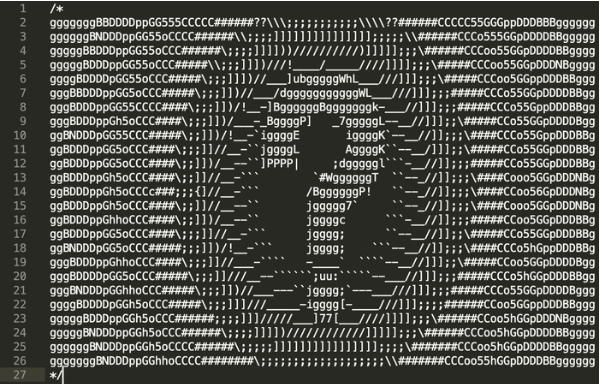
Import a GIF image from the web:
| In[32]:= |
|
| Out[32]= |
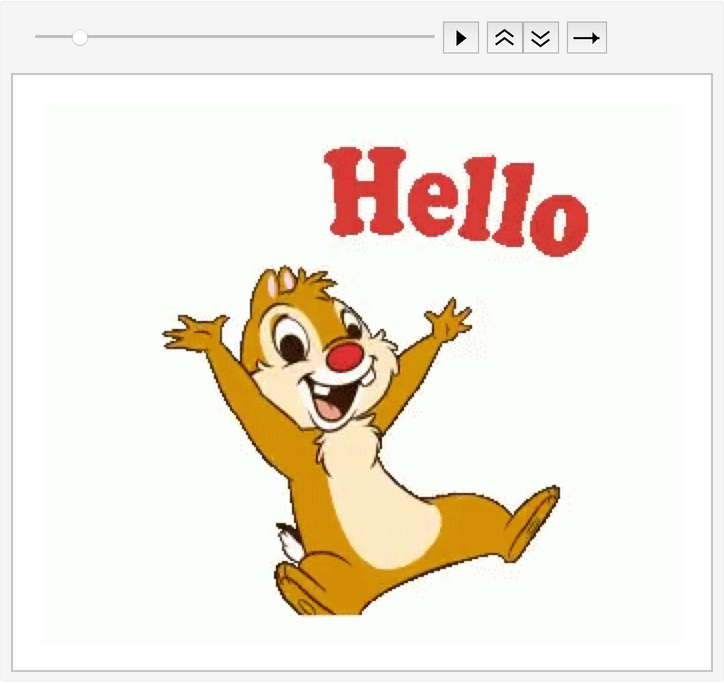
|
Generate an ASCII art version for each of the frames:
| In[33]:= |
|
| Out[33]= |
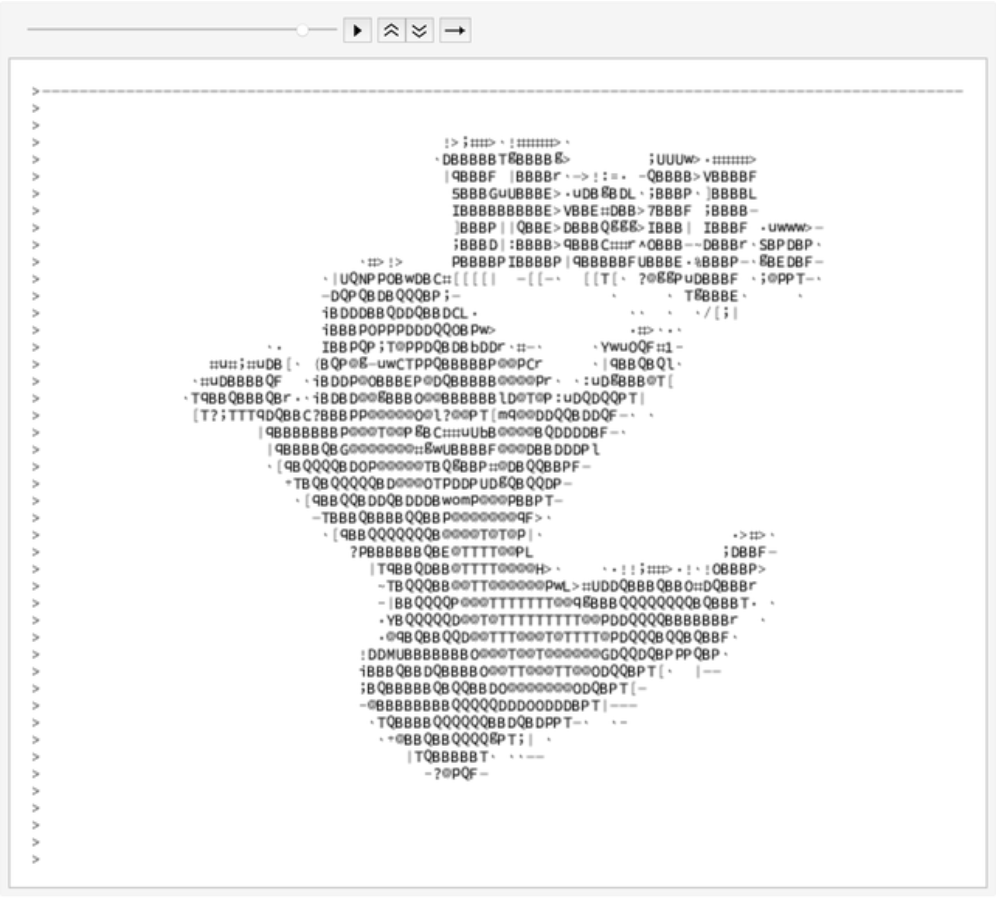
|
Using a new font requires rasterizing a new ASCII character set, which might be slow:
| In[34]:= |
![(* Evaluate this cell to get the example input *) CloudGet["https://www.wolframcloud.com/obj/319429c3-4999-4d00-b832-1d2a0ae97f3c"]](https://www.wolframcloud.com/obj/resourcesystem/images/0e8/0e8474fa-6000-491f-8398-9adb712b34c9/46d1045b9ac7a560.png)
|
| Out[34]= |
|
Using the same font a second time is much faster:
| In[35]:= |
|
| Out[35]= |
|
The final output image size might not exactly match the input image size:
| In[36]:= |
![(* Evaluate this cell to get the example input *) CloudGet["https://www.wolframcloud.com/obj/5c91390b-3376-4498-b58b-68712cce520b"]](https://www.wolframcloud.com/obj/resourcesystem/images/0e8/0e8474fa-6000-491f-8398-9adb712b34c9/79f38faa451258c0.png)
|
| Out[36]= |
|
| In[37]:= |
|
| Out[37]= |
|
Any font size smaller than 4 doesn't produce readable characters when outputting an Image:
| In[38]:= |
![(* Evaluate this cell to get the example input *) CloudGet["https://www.wolframcloud.com/obj/fe1b264a-c310-47f6-9aba-f37d3106d96e"]](https://www.wolframcloud.com/obj/resourcesystem/images/0e8/0e8474fa-6000-491f-8398-9adb712b34c9/7b249bfc8dc6cc34.png)
|
| Out[38]= |

|
Take a high-resolution image:
| In[39]:= |
|
| In[40]:= |
|
| Out[40]= |
|
| In[41]:= |
|
| Out[41]= |

|
Convert to ASCII art with a very small font size:
| In[42]:= |
|
| Out[42]= |
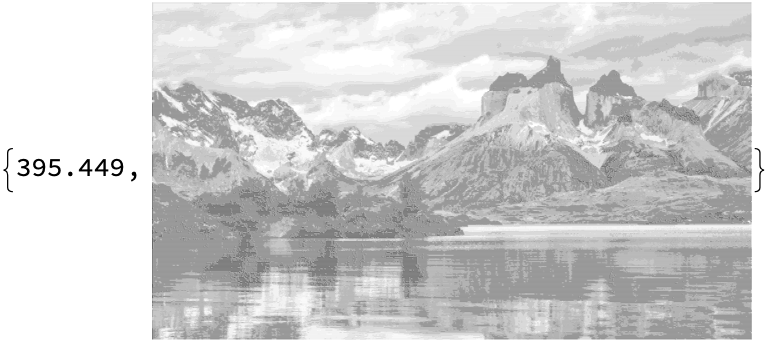
|
Blend the ASCII version with the original image to get a high quality colored ASCII art raster:
| In[43]:= |
|
| Out[43]= |

|
This work is licensed under a Creative Commons Attribution 4.0 International License